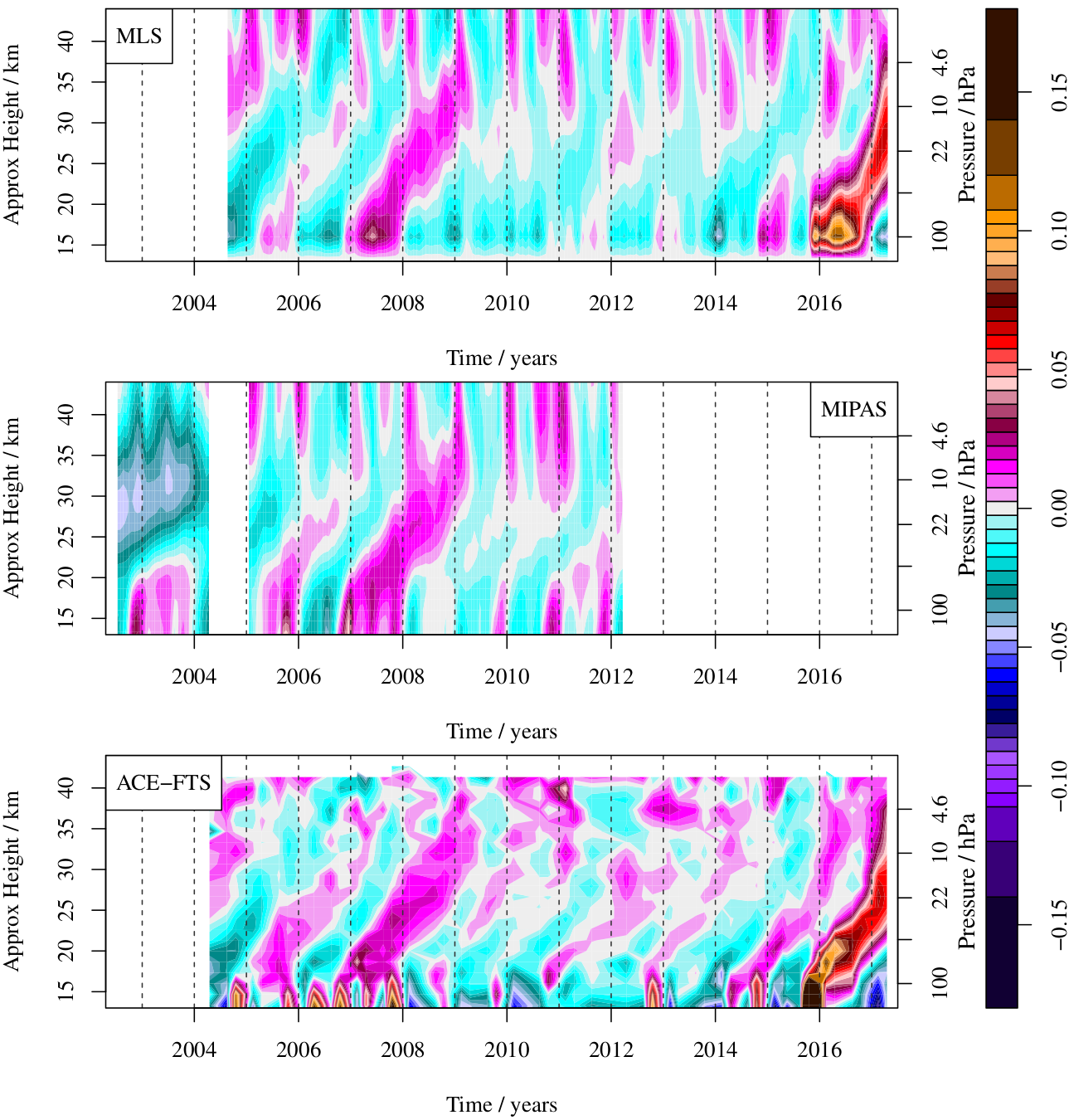The paper that I have been trying to get finished for many months now has finally come out in the discussion stage, in Atmospheric Chemistry and Physics. It is about the amount of Hydrogen Cyanide (HCN) in the stratosphere (which the MLS instrument has been observing since 2004), and how there have been the largest amounts observed during the MLS mission, due to the unusually-large El-Niño event of 2015-16.
The reason you get lots of HCN in an El-Niño year has been known for a while. El-Niño causes droughts in Indonesia and the surrounding area, which in turn lead to forest fires. And the land in Indonesia contains lots of peat, which emits lots of HCN when you burn it. The same thing happened in the big El-Niños in 1997-8 and 1982-3, but this is the first time it has happened when we have had several satellite instruments in orbit to observe the effects.

You can see from this figure that the amount of HCN entering the stratosphere is greater than it has been at any time since 2002. You can also see that this figure was a difficult one to choose a colour scale for, in fact, it was one of the things that prompted my previous post.
Atmospheric Chemistry and Physics is an open-acess journal, so you can read the paper, even if you are not at a University with an institutional subscription. It is also an open-review journal, so you will be able to see the reviewers’ comments when they come out, and you can even make your own comments. Don’t be too nasty, now!

